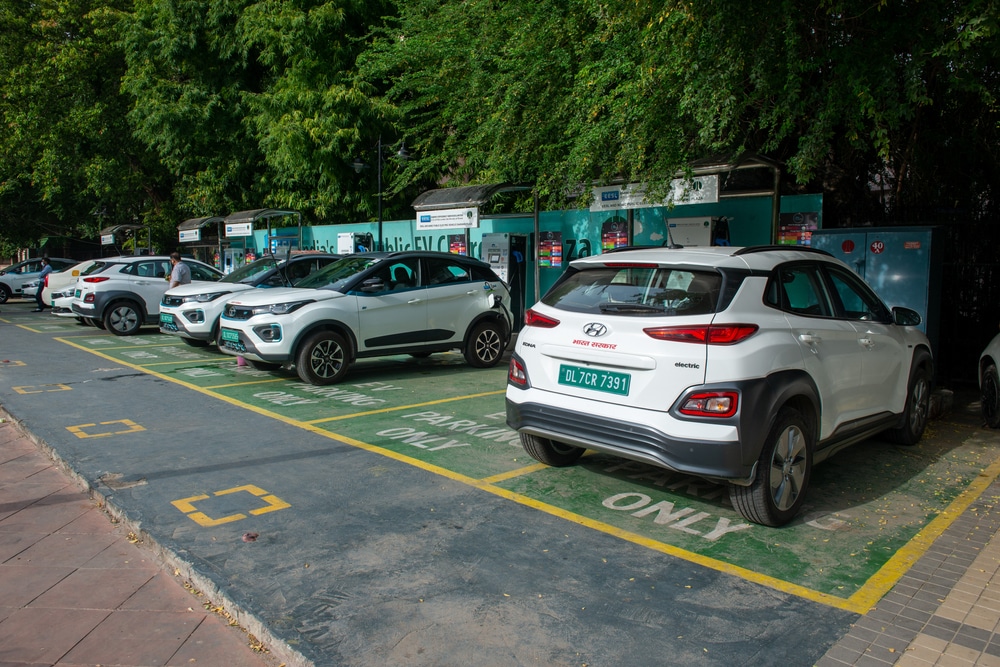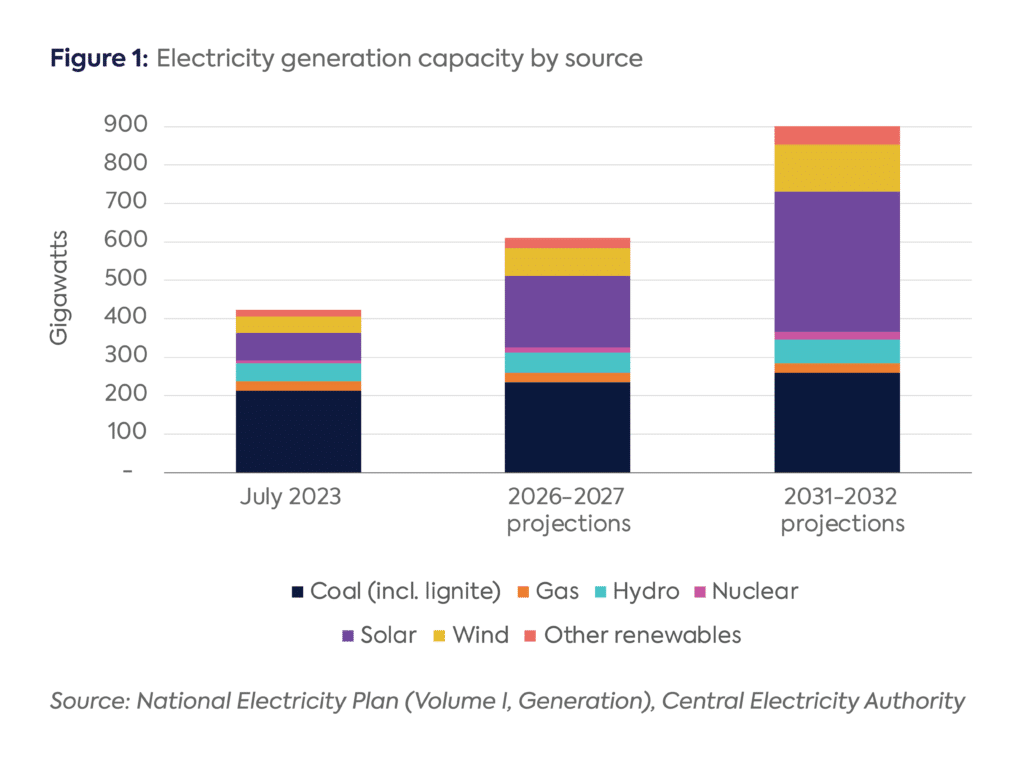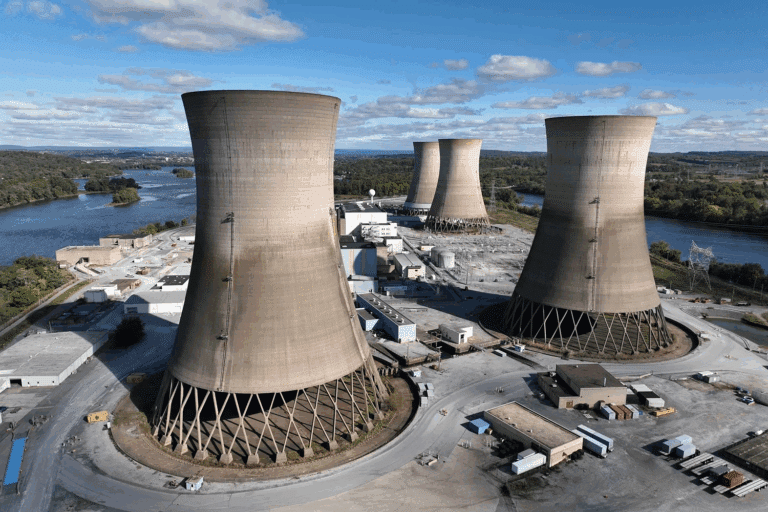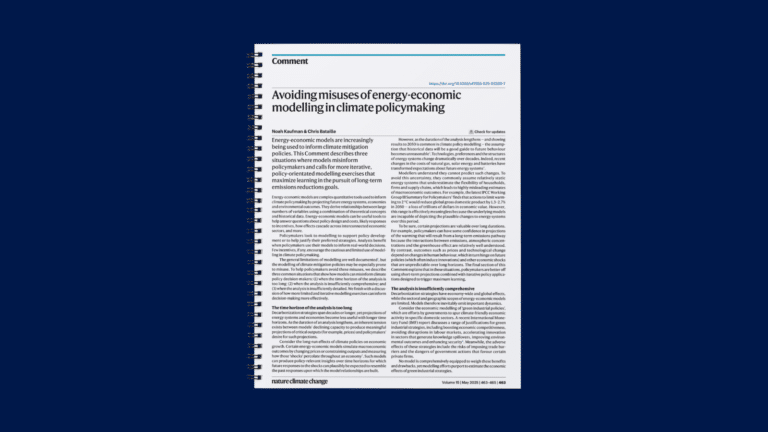Power prices are expected to soar under new tax cut and spending law
In states without policies to drive renewable energy, power prices could surge as federal tax incentives for clean energy disappear, according to Energy Innovation, a think tank.
Current Access Level “I” – ID Only: CUID holders, alumni, and approved guests only
Insights from the Center on Global Energy Policy

This Energy Explained post represents the research and views of the author. It does not necessarily represent the views of the Center on Global Energy Policy. The piece may be subject to further revision. Contributions to SIPA for the benefit of CGEP are general use gifts, which gives the Center discretion in how it allocates these funds. Rare cases of sponsored projects are clearly indicated.
For a full list of financial supporters of the Center on Global Energy Policy at Columbia University SIPA, please visit our website at Our Partners. See below a list of members that are currently in CGEP’s Visionary Circle. This list is updated periodically.
As the world’s most populous country,[1] fifth-largest economy,[2] and third-largest emitter of CO2,[3] India has taken several policy measures to address its energy trilemma of ensuring energy security, energy affordability, and environmental sustainability. While the policy impact has been notable, the targets India has set for the future are even more ambitious. The country has committed to increasing its share of non-fossil electricity generation capacity to 50 percent by 2030,[4] accounting for 500 gigawatts (GW).[5] This calls for an increase in annual capacity addition of nearly 39 GW per annum until 2030, compared to 12.8 GW per annum achieved in the period 2016–22.[6] More distant targets include becoming energy independent by 2047[7] and achieving net zero by 2070.[8] In pursuit of these objectives, several new policies were announced in the past year. In this article, the authors review these initiatives and assess the challenges ahead.[9]
Targeted policies have aimed at ensuring universal access to electricity,[10] increasing the availability of liquid petroleum gas[11] for cooking in rural areas, increasing the share of natural gas in the energy mix to 15 percent,[12] subsidizing the sale of electric vehicles through the Faster Adoption and Manufacturing of Hybrid and Electric Vehicles (FAME) scheme,[13] and producing green hydrogen through the National Hydrogen Mission.[14]
Since 2010, electricity access has increased from 76 percent of the population to 100 percent,[15] while access to modern cooking fuels has improved from 38 percent to 71 percent.[16] Concurrently, the share of non-fossil sources of electricity generation capacity has also increased, from 36 percent[17] to 42 percent.[18] On the demand side, the share of annual sales of pure internal combustion engine vehicles has fallen by nearly 10 percent, and alternative fueled vehicles[19] now account for nearly five percent of the total vehicle fleet in India. The FAME scheme, which has been extended by two years, aims to subsidize the sale of nearly 1.6 million vehicles by 2024.[20] Due to these policies and several other measures, the authors estimate that India’s emissions intensity with respect to GDP is 31 percent lower relative to 2010.[21]
While India has established itself as a leading emerging nation with ambitious commitments to climate change mitigation, there is a long road ahead that will require bold policy decisions, influencing a range of stakeholders. Some areas of focus include: attracting capital to finance a just energy transition, increasing the share of non-fossil electricity, and deploying new clean technologies.
India has adopted several economic measures to provide a thrust to the pace of decarbonization. Attempting to address financing gaps, India released a green bond framework in November 2022 that established the architecture for a green bond market. Subsequently, India successfully issued its first pair of sovereign green bonds, worth $2 billion, in January 2023[22] with an estimated premium of 5–6 basis points.[23] The denomination of the bonds in the Indian rupee will minimize asset-liability currency mismatches and foster growth in the domestic sustainability-focused fixed-income asset management industry.[24]
Additionally, India’s 2023–24 Union Budget saw increased allocation toward green infrastructure, signaling a stronger commitment to India’s climate mitigation goals.[25] The outlay for renewable energy increased by nearly 50 percent compared to the previous year, while that for nuclear was 42 percent higher.[26] The 2023–24 budget speech also indicated subsidies for electricity storage projects.[27] The increased outlay is certainly welcome given the threefold increase in annual capacity additions required for non-fossil electricity sources. With the 2022–23 Economic Survey estimating that India’s EV market will grow by 49 percent per annum between 2022 and 2030,[28] the budgetary allocation for FAME was also doubled to facilitate this increased growth trajectory.[29]
Finally, in June 2023, the Ministry of Power issued a notification on the much-awaited Carbon Credit Trading Scheme (CCTS).[30] Once operational, a formalized carbon credit trading market will expedite India’s energy transition by creating incentives to reduce industrial emissions. However, the success of India’s CCTS will depend on the targets set for relevant carbon-emitting industries and the pricing of carbon certificates issued under this scheme.
Predicting a large increase in the total electricity demand for the country, the National Electricity Plan notified this year projects increasing total installed electricity capacity in the country by more than double, from the present 431 GW[31] to 900 GW by 2031-32.[32] Of this, 615 GW is expected to come from non-fossil sources, with 596 GW from renewable sources. As a result, the share of renewable energy capacity in India’s electricity generation mix will grow from 42 percent currently to 55 percent by 2026–27 and 66 percent by 2031–32, primarily led by solar and wind energy.

There is a significant attempt to expand India’s technology toolbox to support the energy transition. For the first time, India will bid out offshore wind energy blocks off the coasts of the states of Gujarat and Tamil Nadu, beginning with 4 GW per year for three years up to 2024–25 and subsequently to 5 GW per year for five years up to 2029–30 with evacuation and transmissions costs waived.[33] Further, under the Green Hydrogen Mission, which aims at producing 5 million metric tons by 2030,[34] the government has published guidelines for schemes that provide incentives for electrolyzer manufacturing[35] and green hydrogen production.[36] India is also taking steps in the development of small modular reactors (SMRs) with up to 300 MW capacity.[37] Compared to large nuclear plants, SMRs are safer and more cost-effective, and offer greater flexibility in design. Finally, an auction for the exploitation of nearly 6 million metric tons of newly discovered lithium ore in Jammu and Kashmir[38] is also expected this year.[39]
Even with the significant achievements in addressing energy poverty and increasing the share of clean energy in its economy, India’s enhanced ambitions will require heroic efforts to overcome challenges and achieve the targets set for the next decades. It has been estimated that India will need investments between $160 billion and $200 billion per annum[40] to achieve its energy transition targets, which is about 5 percent of its current GDP.[41] Even with the higher budgetary outlay and efforts to seed a green bonds market, significant policy action to attract private, and in particular international, capital is needed. Additionally, the challenging geopolitical environment stemming from the conflict in Ukraine and supply disruptions from China will require India to augment its domestic manufacturing capabilities for green infrastructure. A critical pillar of the just energy transition will be creating a skilled workforce; government estimates indicate that India has the potential to create around 35 million green jobs by 2047.[42]
CGEP’s Visionary Circle
Corporate Partnerships
Occidental Petroleum Corporation
Tellurian Inc
Foundations and Individual Donors
Anonymous
Anonymous
the bedari collective
Jay Bernstein
Breakthrough Energy LLC
Children’s Investment Fund Foundation (CIFF)
Arjun Murti
Ray Rothrock
Kimberly and Scott Sheffield
[1] United Nations, Department of Economic and Social Affairs, “UN DESA Policy Brief No. 153: India overtakes China as the world’s most populous country,” April 24, 2023, https://www.un.org/development/desa/dpad/publication/un-desa-policy-brief-no-153-india-overtakes-china-as-the-worlds-most-populous-country/ .
[2] International Monetary Fund, “World Economic Outlook: A Rocky Recovery,” April 2023, https://www.imf.org/-/media/Files/Publications/WEO/2023/April/English/text.ashx.
[3] Energy Institute, “Statistical Review of World Energy 2023,” https://www.energyinst.org/statistical-review.
[4] Government of India, “India’s Updated First Nationally Determined Contribution Under Paris Agreement (2021-2030),” August 2022, https://unfccc.int/sites/default/files/NDC/2022-08/India%20Updated%20First%20Nationally%20Determined%20Contrib.pdf.
[5] Prime Minister’s Office, Press Information Bureau, “National Statement by Prime Minister Shri Narendra Modi at COP26 Summit in Glasgow,” November 1, 2021, https://pib.gov.in/PressReleseDetail.aspx?PRID=1768712.
[6] Kaushik Deb and Pranati Chestha Kohli, “Assessing India’s Ambitious Climate Commitments,” Center on Global Energy Policy, December 8, 2022, https://www.energypolicy.columbia.edu/publications/assessing-india-s-ambitious-climate-commitments.
[7] Prime Minister’s Office, Press Information Bureau, “English Rendering of the Text of PM’s Address from the Red Fort on 75th Independence Day,” August 15, 2021, https://pib.gov.in/PressReleasePage.aspx?PRID=1746062.
[8] Prime Minister’s Office, Press Information Bureau, “National Statement by Prime Minister Shri Narendra Modi at COP26 Summit in Glasgow,” November 1, 2021, https://pib.gov.in/PressReleseDetail.aspx?PRID=1768712.
[9] The policy choices India faces in its energy transition will also be discussed at the upcoming Columbia India Energy Dialogue, hosted by the India Program at the Center on Global Energy Policy (CGEP), on September 18, 2023.
[10] Press Information Bureau, Government of India, “Saubhagya Electrification Scheme,” March 16, 2023, https://pib.gov.in/PressReleaseIframePage.aspx?PRID=1907728.
[11] Ministry of Petroleum and Natural Gas, “About Pradhan Mantri Ujjwala Yojana,” accessed August 2023, https://www.pmuy.gov.in/about.html.
[12] Press Information Bureau, Government of India, “The Government Has Set a Target to Raise the Share of Natural Gas in Energy Mix to 15% in 2030 from About 6.3% Now,” July 25, 2022, https://pib.gov.in/PressReleasePage.aspx?PRID=1844630.
[13] Press Information Bureau, Government of India, “FAME and PLI Schemes Promotes Use of Electric Vehicles in the Country,” December 2022, https://www.pib.gov.in/PressReleasePage.aspx?PRID=1882097.
[14] Ministry of New and Renewable Energy, Government of India, “National Green Hydrogen Mission,” January 2023, https://mnre.gov.in/img/documents/uploads/file_f-1673581748609.pdf.
[15] The World Bank, “Access to Electricity (% of population) – India,” accessed August 2023, https://data.worldbank.org/indicator/EG.ELC.ACCS.ZS?locations=IN.
[16]The World Bank, “Access to Clean Fuels and Technologies for Cooking (% of population) – India,” accessed August 2023, https://data.worldbank.org/indicator/EG.CFT.ACCS.ZS?locations=IN.
[17] Central Electricity Authority, Ministry of Power, Government of India, “Installed Capacity Generation January 2010,” https://cea.nic.in/wp-content/uploads/2020/05/exe_summary-01-4.pdf.
[18] Central Electricity Authority, Ministry of Power, Government of India, “Installed Capacity Generation July 2023,” https://cea.nic.in/wp-content/uploads/installed/2023/07/IC_July_2023.pdf.
[19]Ministry of Road Transport & Highways (MoRTH), Government of India, “Vahan Dashboard,” accessed August 2023, https://vahan.parivahan.gov.in/vahan4dashboard/.
[20] Ministry of Heavy Industries, Government of India, “About FAME II,” accessed August 2023, https://fame2.heavyindustries.gov.in/content/english/1_1_AboutUs.aspx.
[21] Authors’ calculations based on data from Energy Institute, “Statistical Review of World Energy,” 2023, https://www.energyinst.org/statistical-review; and International Monetary Fund, “World Economic Database,” https://www.imf.org/en/Publications/WEO/weo-database/2023/April.
[22] Reserve Bank of India, “Underwriting Auction for Sale of Government of India Sovereign Green Bonds for ₹8,000 Crore on January 25, 2023,” press release, January 24, 2023, https://www.rbi.org.in/scripts/BS_PressReleaseDisplay.aspx?prid=55100#.
[23] Dharamraj Lalit Dhutia, “India’s First Green Bond Issue Pulls Local Bidders, Foreigners Aloof—Traders,” Reuters, January 26, 2023, https://www.reuters.com/world/india/india-sells-first-green-bonds-5-6-basis-points-below-sovereign-yields-2023-01-25/.
[24] Gautam Jain and Kaushik Deb, “India Integrates Green Bonds Into Its Decarbonization Strategy,” Center on Global Energy Policy, March 30, 2023, https://www.energypolicy.columbia.edu/india-integrates-green-bonds-into-its-decarbonization-strategy/.
[25] Kaushik Deb, Pranati Chestha Kohli, and Dakshesh Pranav Thacker, “Unpacking India’s Green Growth Budget,” Center on Global Energy Policy, February 27, 2023, https://www.energypolicy.columbia.edu/unpacking-indias-green-growth-budget/.
[26] Ibid.
[27] Ministry of Finance, Government of India, ”Speech of Nirmala Sitharaman, Minister of Finance,” February 1, 2023, https://www.indiabudget.gov.in/doc/budget_speech.pdf.
[28] Department of Economic Affairs, Ministry of Finance, Government of India, “Economic Survey 2022-23,” January 2023, https://www.indiabudget.gov.in/economicsurvey/doc/echapter.pdf.
[29] Kaushik Deb, Pranati Chestha Kohli, and Dakshesh Pranav Thacker, “Unpacking India’s Green Growth Budget,” Center on Global Energy Policy, February 27, 2023, https://www.energypolicy.columbia.edu/unpacking-indias-green-growth-budget/.
[30] Ministry of Power, Government of India, “Notification on India’s Carbon Credit Trading Scheme, 2023,” June 28, 2023, https://beeindia.gov.in/sites/default/files/CCTS.pdf.
[31] Central Electricity Authority, Ministry of Power, Government of India, “All India Installed Capacity (in MW) of Power Stations as on 30th June 2023,” accessed August 2023, https://cea.nic.in/wp-content/uploads/installed/2023/06/IC_June_2023_Updated.pdf.
[33] Press Information Bureau, Ministry of New and Renewable Energy, Government of India, “Offshore Wind Energy in India,” June 9, 2022, https://pib.gov.in/Pressreleaseshare.aspx?PRID=1832706.
[34] Ministry of New and Renewable Energy, Government of India, “National Green Hydrogen Mission,” January 2023, https://mnre.gov.in/img/documents/uploads/file_f-1673581748609.pdf.
[35] Ministry of New and Renewable Energy (Hydrogen Division), Government of India, “Scheme Guidelines for Implementation of ‘Strategic Interventions for Green Hydrogen Transition (SIGHT) Programme – Component I: Incentive Scheme for Electrolyzer Manufacturing’ of the National Green Hydrogen Mission,” June 28, 2023, https://mnre.gov.in/img/documents/uploads/file_f-1687964057675.pdf.
[36] Ministry of New and Renewable Energy (Hydrogen Division), Government of India, “Scheme Guidelines for Implementation of ‘Strategic Interventions for Green Hydrogen Transition (SIGHT) Programme – Component II: Incentive Scheme for Green Hydrogen Production (under Mode 1)’ of the National Green Hydrogen Mission,” June 28, 2023, https://mnre.gov.in/img/documents/uploads/file_f-1687963916599.pdf.
[37] Press Information Bureau, Department of Atomic Energy, Government of India, “Union Minister Dr Jitendra Singh Says, India Taking Steps for Development of Small Modular Reactors (SMR), with up to 300 MW Capacity to Fulfill its Commitment to Clean Energy Transition,” November 27, 2022, https://pib.gov.in/PressReleasePage.aspx?PRID=1879298.
[38] Ministry of Mines, Government of India, “Lok Sabha Unstarred Question No 938 Answered on 26.07.2023- Lithium Reserves.”
[39] “India to Auction Lithium Reserves Found in Jammu and Kashmir by December: Mines Secretary,” The Hindu, May 2, 2023, https://www.thehindu.com/news/national/india-to-auction-lithium-reserves-found-in-jammu-and-kashmir-by-december-mines-secretary/article66802920.ece.
[40] Gautam Jain and Kaushik Deb, “India Integrates Green Bonds Into Its Decarbonization Strategy,” Center on Global Energy Policy, March 30, 2023, https://www.energypolicy.columbia.edu/india-integrates-green-bonds-into-its-decarbonization-strategy/.
[41] The World Bank, “GDP (current US$) – India,” accessed August 2023, https://data.worldbank.org/indicator/NY.GDP.MKTP.CD?locations=IN.
[42] Skill Council for Green Jobs, Ministry of Skill Development and Entrepreneurship, Government of India, “Green Jobs Handbook 2047,” 2022, https://sscgj.in/wp-content/uploads/2022/06/Green-Jobs-Hand-Book-PDF.pdf.
This special CGEP blog series, featuring six contributions from CGEP scholars, analyzes the potential impacts of the OBBBA across a range of sectors.

The conflict between Iran, Israel, and now the United States has yet to disrupt energy supplies to global markets.

The commercial deals Trump struck on artificial intelligence cooperation will likely shift the global balance of power for one of this century's most critical technologies.

President Donald Trump's first official foreign policy trip, as in his first term, was to Saudi Arabia earlier this month, with additional stops in Qatar and the United Arab Emirates.

A nuclear energy resurgence is vital to meet rising electricity demand.


Energy-economic models are increasingly being used to inform climate mitigation policies. This Comment describes three situations where models misinform policymakers and calls for more iterative, policy-orientated modelling exercises that maximize learning in the pursuit of long-term emissions reductions goals.
